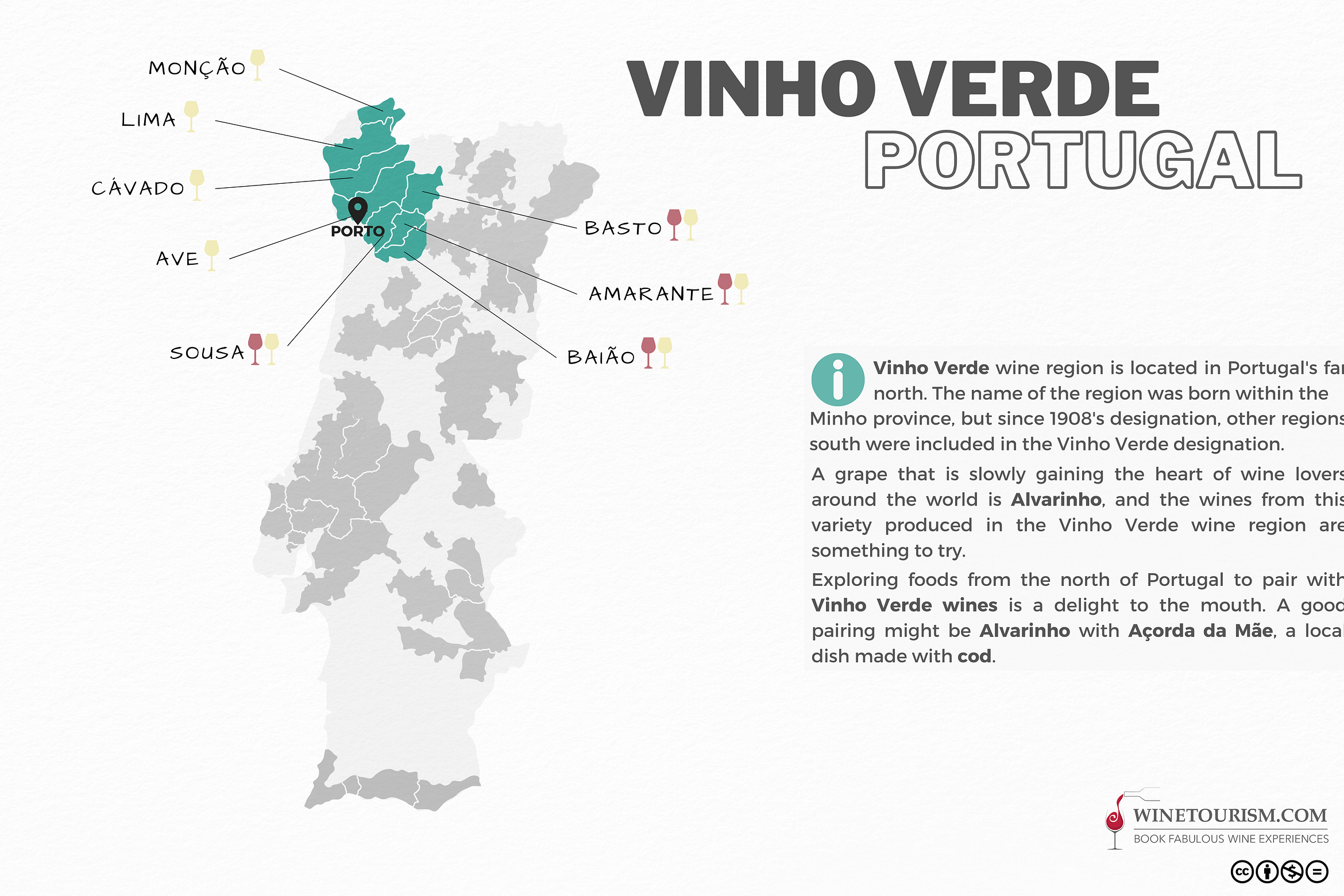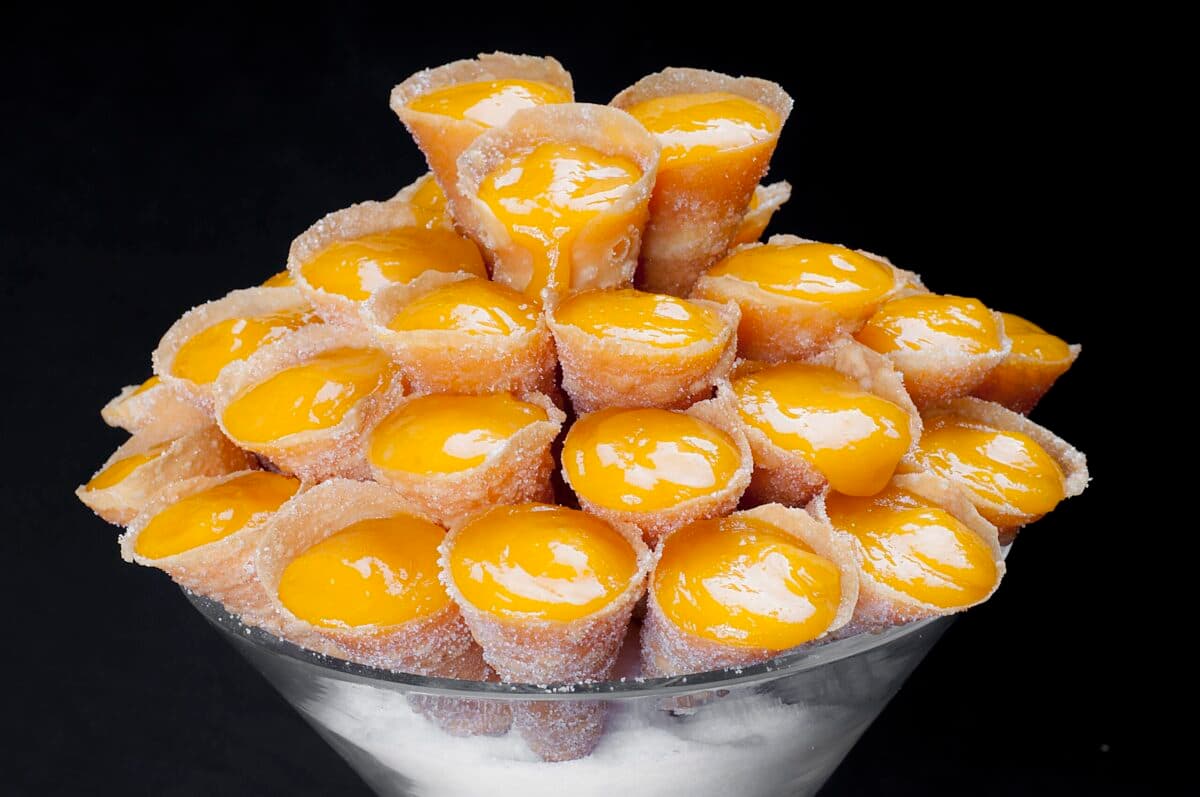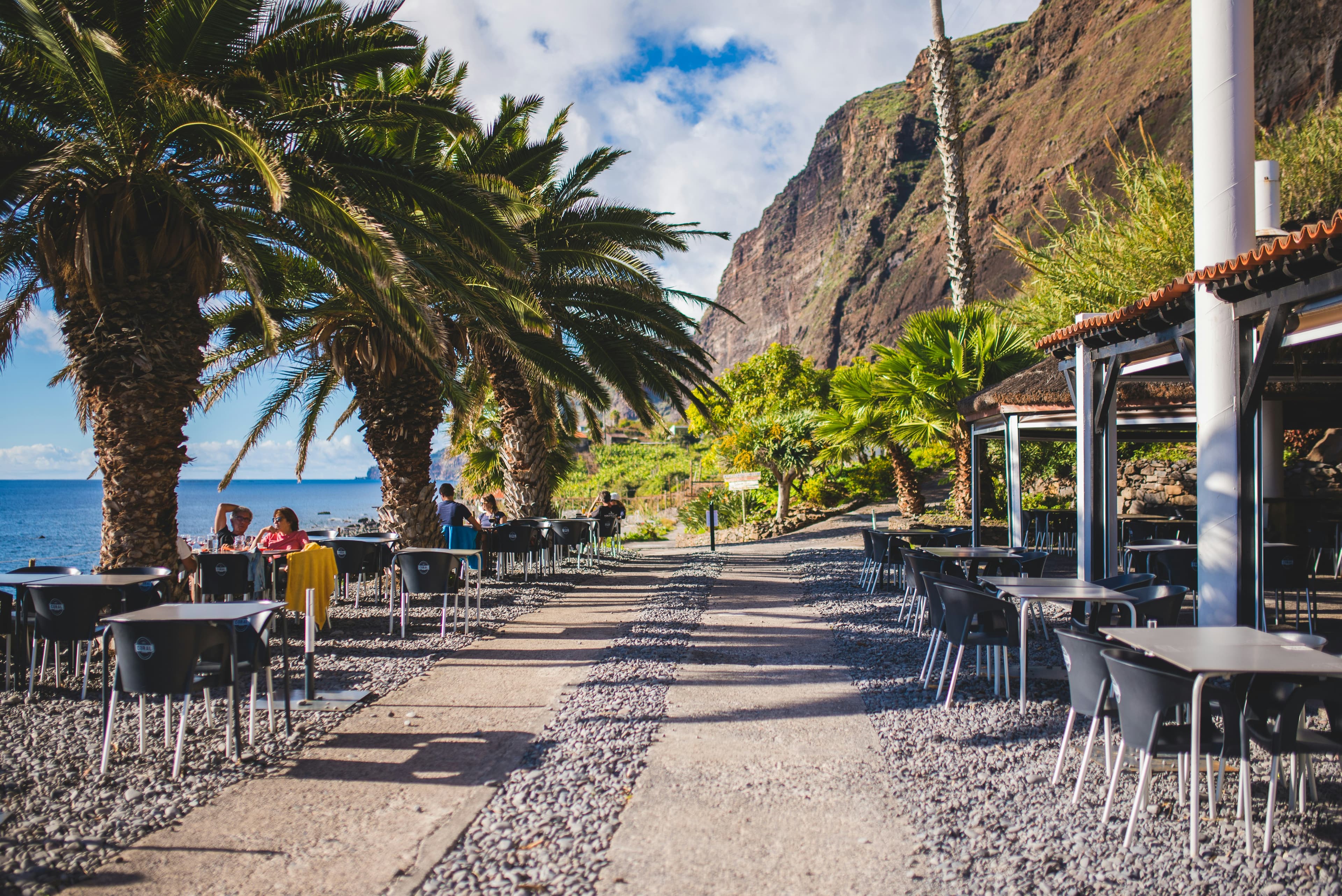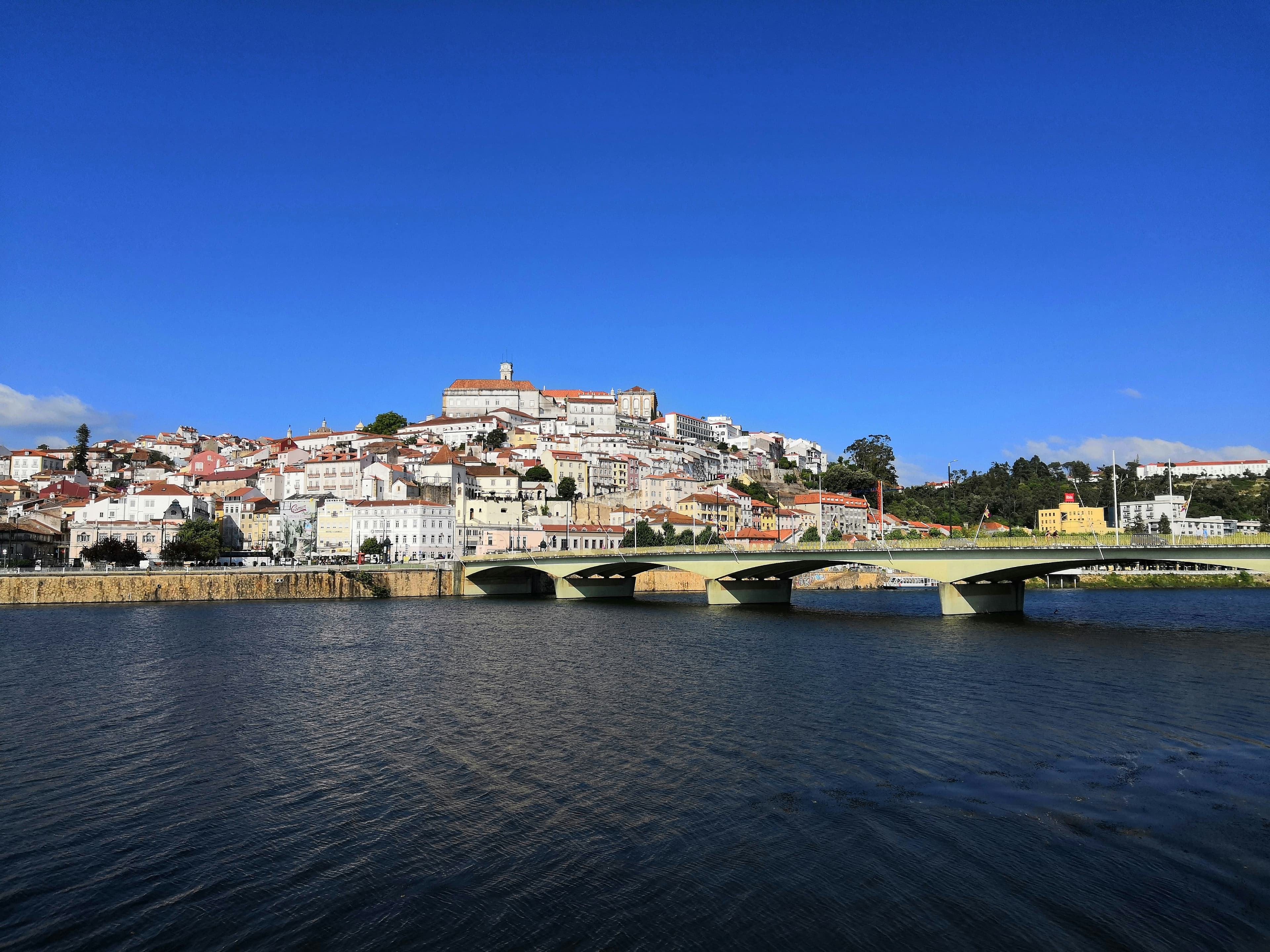
Vinho Verde, An Introduction to a Unique Wine
Explore Vinho Verde, Portugal’s fresh, lightly sparkling wine. Learn its history, varieties, and where to taste it in the Douro Valley.
Vinho Verde, native to Portugal, is not just any wine… Its name, meaning “green wine”, does not refer to its colour, unlike other types of wine, but rather to its youthfulness and the lush greenery of the Minho region in northern Portugal. This wine is one of the country’s oldest, with evidence dating back to Roman times! It comes from a designated region established in 1908, recognised as DOC (Denominação de Origem Controlada) since 1984, and covering nearly 21,000 hectares (approximately 9% of Portugal’s total vineyard area).
Minho, A Unique Terroir
Minho is a humid, temperate region, influenced by the Atlantic Ocean. This humidity, combined with acidic, granitic soils, creates ideal conditions for fresh, aromatic, and lightly effervescent wines. Local winemakers cultivate indigenous grape varieties such as Loureiro, Arinto, Trajadura, Azal, and Alvarinho. These varieties, perfectly suited to the local climate, produce wines with remarkable freshness, marked acidity, and floral or fruity aromas; classic characteristics of Vinho Verde.

The Secrets of Winemaking
What sets Vinho Verde apart is its vinification process. Some producers allow the wine to ferment in the bottle, naturally capturing carbon dioxide, which gives the wine a gentle sparkle. Others prefer fermentation in a tank before bottling under pressure to achieve this effervescence. This subtle yet distinct fizziness is precisely what makes Vinho Verde unique among wines.
Styles of Vinho Verde
White
The most common, offering notes of lemon, green apple, and white flowers.
Rosé
Less frequent, with fresh red fruit aromas.
Red
Rare ! Produced from grapes such as Vinhão, Borraçal, and Amaral, giving tannic and fruity wines.
Tasting tips and secrets
Ideal temperature : 8-10 °C for white, 10-12 °C for rosé. Too cold, the aromas fade; too warm, the acidity dominates
The right glass : a slightly flared tulip-shaped glass allows the floral and fruity aromas to fully develop.
Vertical tasting : sample the same vintage across several years to appreciate the evolution of a Vinho Verde.
Rare grape varieties : some producers use almost forgotten varieties, such as Avesso or Pedernã, which are only available on-site.
Secret fermentation : certain vintages benefit from a mixed fermentation (tank + bottle) to balance effervescence and aromatic intensity.
Where to Taste Vinho Verde in the Douro Valley
Although the Vinho Verde region is distinct from the Douro, some Douro wineries also offer tastings of Vinho Verde. We recommended Quinta do Vallado which is located in Peso da Régua and offers wine tastings ; Quinta do Portal (Sabrosa) this family-run estate offers tours and tastings of its wines, with breathtaking views of the Douro valley, a truly sublime setting !

Food Pairings
Vinho Verde, with its freshness and liveliness, pairs beautifully with seafood (oysters, clams, prawns) ; grilled or baked fish ; summer salads ; fresh cheeses.
Its low alcohol content (usually between 8.5% and 11%) makes it an excellent aperitif or a light companion for meals.
Where to Buy this famous Vinho Verde ?
Many wine cellars and delicatessens in Portugal offer a wide selection of Vinho Verde at all price points. You’ll also likely find it in some supermarkets or online (by the way, Pingo Doce has a great wine selection with very reasonable prices). And if you’re planning to enjoy a good Vinho Verde by the Douro or on the beach, don’t forget to bring a corkscrew — it’s always better (speaking from experience here: opening a bottle of wine with the heel of a shoe doesn’t work quite as well!). And for an even more authentic experience, the best option is still to taste the wines directly at the producers’ estates! (plus, they’ll tell you all about the region’s history and their vineyard’s story).
Share this article
Suggested articles

Convent Sweets: Delicacies Born in the Monasteries
Portugal wouldn’t be the same without its convent sweets. These golden pastries, rich in egg yolks and scented with cinnamon, tell the story of a country where faith met indulgence. Born in the silence of monasteries between the 15th and 18th centuries, they were once made by monks and nuns, often to support the convent or thank benefactors. Today, they are an essential part of Portuguese culinary heritage.

Madeira: island cuisine and espetadas
The archipelago of Madeira, located off the Portuguese coast, is much more than just a paradise for hikers or nature lovers: its cuisine reflects its history, its geography and its island spirit. Among the emblematic dishes, the Espetada stands out for its rustic simplicity, its generosity and its ability to gather people around the fire. In this article, we explore the island cuisine of Madeira in general, and then take a deep dive into the espetada: its origin, preparation, side dishes and why it is a must-try during a stay on Madeira.

Where to eat in Coimbra if you’re a student: fun, affordable and friendly spots
Coimbra is home to the esteemed University of Coimbra and its student population creates a vibrant food scene geared toward affordability and simplicity. With so many students, many restaurants offer student menus or prato do dia (dish of the day) at great value. The official tourism site notes that restaurants range from typical family-run taverns to more sophisticated diners. In short: good food, good price, good vibe.

Bairrada, Land of Suckling Pig and Sparkling Wine
In the heart of central Portugal, between the valleys of the Mondego and Vouga rivers, lies the region of Bairrada, a land where vineyards meet pig farms, where the slow heat of wood-fired ovens blends with the effervescence of sparkling wine. Here, every meal is a ritual and every sip a celebration. If you’re looking for an authentic Portugal, far from seaside clichés, let yourself be charmed by Bairrada, a land of indulgence, warmth, and tradition.

Pão de Ló
In every Portuguese family, there’s a cake that comes out of the oven like a little sun: the pão de ló. Golden, airy, soft, it always announces something joyful. It’s the cake of dressed-up Sundays, overfilled tables, and aunts who hug you too tightly while saying how much you’ve grown.
.jpg&w=3840&q=75)
Pastéis de Bacalhau
There are dishes that smell like holidays and grandma’s kitchen. Pastéis de bacalhau are exactly that. These little golden cod croquettes, crispy on the outside and soft on the inside, are at once an appetiser, a madeleine of Proust, and proof that Portugal has completely mastered the art of frying.


